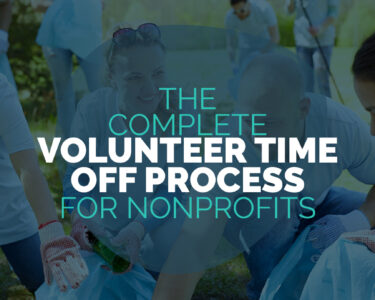The Center for Effective Philanthropy’s new report reveals both bright spots and a warning for philanthropy: while first movers in the social sector have begun funding and building powerful AI tools to advance opportunity and equity, adoption in these early days is slow and uneven overall.
CEP’s findings underscore what I’ve learned from co-founding and leading the funder community Opportunity AI: the social sector can build equity-enhancing uses of AI and mitigate AI’s downsides — but only if funders develop the know-how to play their necessary, catalytic role. Thankfully, there are concrete actions we can take to bring this about and bright spots in the sector to build upon.
Successful Early Movers Reveal an Opportunity for Funders
First, the bright spots: technically proficient foundations like Gates Foundation, GitLab Foundation, Autodesk Foundation, Patrick J. McGovern Foundation, Google.org, Siegel Family Endowment, and others — sometimes working alongside tech-forward ecosystem non-profits like Fast Forward, Renaissance Philanthropy, and Decoded Futures — are funding and incubating remarkable AI social sector tools.
But per CEP’s survey, nearly 90 percent of foundations provide zero support to help their grantees implement AI. Among the fraction that do offer such support, half have done so via general operating grants that organizations then choose to use for AI work. Meanwhile, three quarters of nonprofit leaders report that none or very few of their funders understand their AI-related needs, and that conversations on the topic are rare.
This disconnect matters because the social sector isn’t just another industry adopting a new technology. Nonprofits, for-profits with social missions, and foundations have a unique role to play as a counterweight to AI’s potential default trajectory — one that, left unchecked, could deepen inequalities and reduce economic mobility. But for the sector to fulfill that role, we need to move beyond the current moment of scattered adoption toward a more broadly supported movement.
The Social Sector as Co-Creators, Not Just Consumers
Even if technical know-how is currently unevenly distributed, social sector organizations already possess the foundations of what responsible AI development needs: deep understanding of their beneficiaries’ needs, of the nuances of bias, and of the difference between solutions that look good on paper and those that actually add value.
The CEP report highlights examples that demonstrate this potential. Basta built Seekr, an AI-powered career navigation tool explicitly designed for first-generation, historically marginalized college students. Mercy Corps now uses AI to analyze satellite imagery and predict humanitarian crises before they unfold, directing resources where they’re needed most before disaster strikes. Organizations like Career Village, Upwardly Global, Climb Together, Nava, Propel, Pursuit, Rising Academies, and Digital Green have all built AI tools that advance equitable opportunity.
With philanthropy’s continued partnership, more organizations can build and scale such tools — rather than using off-the-shelf tools designed without marginalized populations in mind. As one nonprofit leader put it in the survey: “If equity is the goal, the nonprofit sector must be at the table from the start, not just as users of AI, but as co-creators of its purpose and application.”
Foundations Need Support to Support Others
The call on foundations to better support nonprofit partners in implementing AI is not new — but these calls often miss a key fact highlighted by CEP’s report: most foundation staff lack understanding of AI and its implications, and nearly two-thirds of foundations report that few or none of their staff members have solid AI knowledge. That’s not surprising, given that foundations have prioritized subject matter expertise rather than technical backgrounds in their hiring. For funders to be prepared to support grantees, they must seek support themselves.
This is where philanthropic infrastructure organizations and communities of practice become essential. Leaders like Chantal Forster and the team at Project Evident are helping foundations develop their internal AI capacity and responsible use policies. In the economic opportunity space, Opportunity AI provides technical content to leaders from more than 90 foundations, facilitates multi-donor projects, and convenes funders to share strategies and pipeline for supporting AI tools that advance economic mobility. Renaissance Philanthropy builds thesis-driven funds that pair technical field strategists with philanthropic capital, and also convenes education funders to help them understand AI use cases in K-12.
These intermediaries are necessary for the sector to move at speed and scale. Without them, every foundation reinvents the wheel, makes similar, avoidable mistakes, and misses the same opportunities. And, as I noted in the CEP report, foundation staff can also enhance their own know-how and build bridges to technical communities by attending hackathons and other meetups.
Celebrate AI-Powered Operational Efficiency Gains
The CEP report makes a distinction between using AI for operational efficiency versus programmatic enhancement, noting that most nonprofits currently using AI are doing so with the first of those goals in mind. I agree that much of AI’s ultimate transformative potential lies in programmatic enhancement, but I’d urge both foundations and nonprofits not to minimize the upside of operational efficiency improvements.
We ask an enormous amount of a chronically underfunded social sector. Even excellent organizations struggle with capacity constraints. If nonprofits can automate repeated functions — things like grant writing, data entry, language translation, and reporting — that frees up precious dollars and staff time to serve more beneficiaries more effectively. These efficiency enhancements will get increasingly powerful as organizations bring agentic AI tools online.
There are excellent efforts helping nonprofits take these first steps productively. Initiatives like Decoded Futures, America’s Promise Alliance‘s AI capacity-building cohort, and the Fund for the City of New York’s AI for Nonprofits Sprint bring together AI technologists and nonprofits early in their AI journeys to build practical skills and confidence.
The Window Won’t Stay Open Forever
What’s coming next makes the opportunity and urgency more acute. The future of AI isn’t just tools that respond to our requests — it’s autonomous agents that can act independently on our behalf. Imagine, for example, an AI career coach for low-income job seekers that doesn’t just provide advice but proactively identifies relevant networking events, handles registration, maps accessible routes, and thoughtfully follows up afterward. Such functionality brings technology a meaningful step closer to replicating the magic of a human career coach at scale.
But that future will either be built with the social sector’s expertise and values baked in, or it will be built without us and imposed upon the communities we serve. The report suggests that we’re not yet ready sector-wide to deliver the sunnier scenario, but that we can get there by building on the many bright spots.
The path forward requires foundations to make concrete commitments: building internal capacity integrating technical know-how and equity considerations,, supporting funder coalitions that help share knowledge and develop co-funding opportunities, and fueling nonprofits at all stages of their AI journeys — from those taking their first steps with AI to those building new AI tools for their communities.
The social sector has always been where society works out how to serve those who markets and governments leave behind. AI is no different. We have a choice to be passive recipients of technology built elsewhere, or active shapers of tools designed to enhance opportunity.
Adam Goldfarb is executive director and co-founder of Opportunity AI. Find him on LinkedIn.
👇Follow more 👇
👉 bdphone.com
👉 ultractivation.com
👉 trainingreferral.com
👉 shaplafood.com
👉 bangladeshi.help
👉 www.forexdhaka.com
👉 uncommunication.com
👉 ultra-sim.com
👉 forexdhaka.com
👉 ultrafxfund.com
👉 bdphoneonline.com
👉 dailyadvice.us




